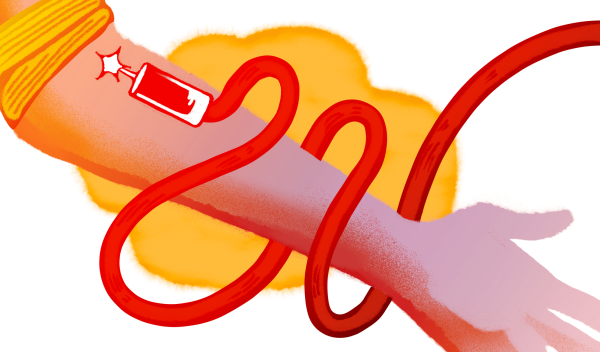Renowned professor reveals an underappreciated source of COVID-19 treatment… Cannabis
Every month, Corvallis’s Old World Deli hosts a Science Pub event, where researchers present insightful lectures to the public. This December, Richard Van Breeman, a professor of medicinal chemistry at Oregon State University, discussed his research on finding “COVID-19 therapeutic agents” within natural products, and described preliminary evidence linked to decreasing COVID-19 infections through CBD.
After a brief introduction, Van Breeman presented several eye-opening statistics. His slide deck read, “50% of all therapeutic agents are derived from natural products, and 66% of cancer drugs are natural products.”
Van Breeman then gave some context for how many of these modern medicinal treatments are developed.
Combinatorial chemistry is a technique through which new chemical compounds are generated by combining chemical “building blocks”. According to Van Breeman, the process for putting together these building blocks requires scaffolds, which are often sourced from natural products. A limited number of scaffolds confines the possibilities of combinatorial chemistry.
Van Breeman asserted that cannabis sativa can provide new and unique scaffolds for the development of future medical treatments. This is one use case of hemp as a tool for drug discovery.
One of the primary focuses of Van Breeman’s lab is the use of specialized mass spectrometry for drug discovery. He read the following from his slides, “Affinity selection-mass spectrometry, or AS-MS, was invented in 1996 to expedite screening of combinatorial libraries for drug discovery.”
Van Breemen and his lab use AS-MS to isolate ligands, which are new drugs, from chemical mixtures. These ligands are selected based on a “pharmacological target, such as a viral protein.” Each ligand is then identified “using the speed, sensitivity and selectivity of mass spectrometry.”
By attaching to the pharmacological target, such as a virus, the ligand can interfere with its functions.
“SARS-CoV-2 has numerous potential targets,” said Van Breeman. SARS-CoV-2 is the virus which causes COVID-19.
Van Breeman’s lab used AS-MS to identify cannabinoids that can inhibit functions in SARS-CoV-2. One of these cannabinoids was CBD.
Van Breeman evidenced these claims with more statistics. His slides read, “A review of cases indicated lower incidence of SARS-CoV-2 infections among CBD users, 6.2% for unvaccinated CBD users vs 8.9% for non-CBD users.”
Van Breeman made several closing remarks. He issued a precautionary warning that “clinical trials are needed to establish dosage, safety and efficacy of these cannabinoids in preventing or treating SARS-CoV-2 infections.”
If there was one key takeaway from Van Breeman’s presentation, it was the following conclusion: “Natural products are selected by nature for biological activity and are mostly unexplored for pharmacological activity.”
Van Breeman remains committed to his research and said, “Despite disinterest from the pharmaceutical industry and declining funding by the National Institute for Health, natural products remain a rich source of drug discovery.”




